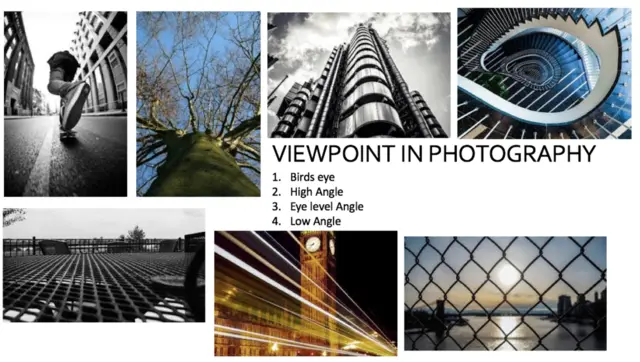Examining the Psychology of Selfies: Uncovering the Reasons Behind the Popularity of Taking Self-Portraits
In recent years, selfies have become an incredibly popular phenomenon. People of all ages, from all walks of life, have embraced the concept of taking pictures of themselves, often with a smartphone. But why has this become so popular? What is it about taking self-portraits that appeals to so many people? To answer these questions, we must first look at the psychology behind selfies and explore the reasons why people are so drawn to taking and sharing them.
One of the primary reasons why people take selfies is the need for self-expression. Self-expression is an innate need that all humans have, and taking selfies is a way to express oneself without relying on words. Selfies allow people to express themselves creatively and show the world who they really are. Additionally, taking selfies can boost self-esteem and confidence. By taking and sharing selfies, people are able to show the world their best self and can receive positive feedback from friends and followers.
The desire for social approval is also an important factor in the popularity of selfies. We all want to be liked, and taking and sharing selfies is a way to get validation from our peers. People who post selfies often receive a lot of likes and comments from their friends, which can be very gratifying. Additionally, taking and sharing selfies is a way for people to build relationships and stay connected with their peers. By posting selfies, people are able to share their lives with others and keep up with their friends’ activities.
Finally, the convenience of taking selfies has made them incredibly popular. With the advent of smartphones, taking and sharing selfies has become easier than ever. People can take a picture of themselves with just a few taps and post it to social media with just a few more. This ease of use has made taking and sharing selfies incredibly popular, and people of all ages have embraced this new form of self-expression.
In conclusion, selfies have become an incredibly popular form of self-expression due to their convenience, the need for self-expression, the desire for social approval, and the ability to boost self-esteem. By examining the psychology behind selfies, we are able to gain a better understanding of why people are so drawn to taking and sharing them.
How Social Media is Influencing Human Behavior: Exploring the Impact of Sharing Photos Online
In today's world, social media has become an integral part of our lives. We use it to stay in touch with friends, to stay informed, and to express ourselves. But there are unintended consequences to this digital revolution, particularly when it comes to how it is influencing human behavior. One of the most significant changes is the way people interact with photos. People now take, share and post photos on a regular basis, often without thinking about the potential long-term implications.
The popularity of sharing photos online has increased significantly over the past decade. People often post photos to show off their friends, family, or accomplishments, or to simply capture a moment in time. But what many people don't realize is that these photos often have a lasting impact on how they are perceived by others. Photos can be used to create an image or identity, and even influence a person's behavior in the long run.
Sharing photos online can also influence how people interact with each other. People may become overly focused on their own photos and not pay attention to the photos of others. This can lead to a lack of connection and understanding, which can ultimately damage relationships. Additionally, people may become more self-conscious about the photos they post in order to create a certain image or identity. This can lead to a feeling of being judged, which can lead to anxiety or depression.
The use of photos can also lead to manipulation and exploitation. People may be encouraged to post certain photos in order to create an idealized image or to gain attention. This can lead to a distorted view of reality and an unhealthy obsession with perfection. It can also lead to people using photos to manipulate or exploit others.
Finally, the use of photos can also lead to a disconnection from reality. People may become so focused on their own photos and the photos of others that they forget to take time to appreciate the world around them. This can lead to a feeling of being disconnected from one's own life and from the lives of those around them.
Overall, it is clear that social media is having a significant impact on human behavior, particularly when it comes to how people interact with photos. While it can be a fun and entertaining way to stay connected, it is important to remember the potential implications of sharing photos online. People should take the time to consider the potential long-term effects before they post photos, and think carefully about how their photos may be interpreted by others.
Exploring the Appeal of Group Photos: Uncovering the Reasons Why People Take Group Shots
Taking photographs is a universal language that everyone can understand. It's a way of capturing moments in time and sharing them with others. But what is it about group photos that makes them so appealing? Why do people take group shots?
One possible answer is that group photos are a way of preserving memories. In a group photo, each person in the picture can look back on it and remember the special moment they shared with their friends or family. Group photos can serve as physical reminders of the bond between the people in the photograph, and the memories they made together.
Group photos are also a great way to capture the energy of a particular time and place. Whether it be a graduation, a birthday celebration, or a family reunion, a group photo can provide a vivid reminder of the feeling in the room during that moment. It can also be a great conversation starter for people who were not present and a source of nostalgia for those who were.
Group photos can also be a way for people to share their identities. A group photo can show the world who a person is, who they associate with, and where they come from. This is especially true for groups celebrating a shared identity, such as a sports team, a band, or a group of friends.
Finally, group photos can be an expression of joy. They provide a tangible representation of the laughter, joy, and happiness that was shared between the people in the photograph. Whether it be a group of friends, a family, or a group of strangers, a group photo can be a lasting reminder of the joy they shared.
In conclusion, group photos are an appealing way for people to capture and share memories, energy, identity, and joy. They can provide a physical reminder of a particular moment in time, and can be a source of nostalgia for those who were present. Group photos also provide a way for people to share their identities, and to express the joy they shared with the people in the photograph.
The Changing Landscape of Human Interaction: Examining the Impact of Photo-Taking on Relationships
In today's world, photography has become an integral element of our daily lives. We take pictures of our friends, our families, and the places we visit. We post them on social media, we use them to document our lives, and we share them with the world. But what impact does this have on our relationships?
The rise of photography has changed the way we interact. In the past, people had to rely on written accounts of events and memories to recall experiences. But now, with digital cameras and smartphones, we can capture moments and share them with others in an instant. This has changed the landscape of human interaction, as we are now able to document our lives and share experiences in a way that was not possible before.
Taking photos can also be a way to strengthen relationships. When we share a photo with someone, it can be a way to express our feelings and show how much we care. It can be a visual reminder of a special moment or a way to commemorate a special event. Taking photos can also be a way to capture memories, which can be shared over time and enjoyed by generations to come.
However, there are some potential drawbacks to this new way of sharing. Taking photos can be a distraction from the present moment, as people become more focused on capturing the perfect shot than on enjoying the experience. It can also create a sense of competition, as people strive to take the best photos and post them on social media. This can lead to feelings of insecurity or envy, which can be detrimental to relationships.
At the end of the day, it is up to us to decide how we use photography in our lives. Taking photos can be a great way to document and share our experiences, but it is important to remember that it should not come at the expense of our relationships. We must be mindful of how photography affects our interactions with others and strive to use it in a way that is beneficial to all.


